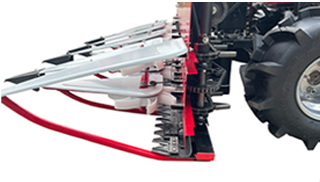Aug . 14, 2024 09:46 Back to list
Effective Methods to Assess Wear and Tear on Brake Drums for Optimal Vehicle Performance
How to Measure Brake Drum Wear
Brake drums are critical components of the braking system in many vehicles, particularly those with rear drum brakes. Over time, these drums can wear out, affecting braking performance and safety. Measuring brake drum wear is essential for vehicle maintenance and ensuring that your brakes function optimally. This article will guide you on how to assess brake drum wear effectively.
Understanding Brake Drum Wear
Brake drums are subjected to intense friction and heat whenever the brakes are applied. This can lead to wear and deformation over time. A worn brake drum can result in decreased braking efficiency, increased stopping distance, and potential safety hazards. It is crucial to monitor their condition regularly to ensure safe driving.
Tools Needed
To measure brake drum wear, you will need the following tools
1. Vernier Caliper or Micrometer These precision tools allow for accurate measurements of the drum's diameter. 2. Brake Drum Gauge (Optional) This specialized tool helps to measure the thickness of the drum, providing quick readings. 3. Ruler or Measuring Tape In the absence of calipers, a ruler can be used as a less precise alternative. 4. Safety Equipment Gloves and safety glasses to protect yourself during the inspection.
Steps to Measure Brake Drum Wear
1. Remove the Wheel Start by safely lifting the vehicle using a jack stand and removing the wheel that covers the brake drum. Ensure the vehicle is on a stable surface to avoid accidents.
how to measure brake drum wear

2. Inspect the Brake Drum Before measuring, visually inspect the brake drum for any signs of cracks, grooves, or discoloration. Heavy scoring or unusual wear patterns could indicate that the drum needs replacement.
3. Measure the Diameter Use a vernier caliper or a micrometer to measure the diameter of the brake drum. Take measurements at several points around the drum's circumference to ensure accuracy, as wear may not be uniform. The standard diameter for most drums is typically specified in the vehicle’s service manual.
4. Check for Minimum Specifications Consult the manufacturer’s specifications for the minimum allowable diameter for your brake drum. If your measurement falls below this threshold, the drum should be replaced.
5. Measure the Thickness Use a brake drum gauge or your vernier caliper to measure the drum’s thickness at different points around its interior surface. The thickness should also meet or exceed the manufacturer’s specifications. Excessive wear can lead to a condition known as drum out of round, which can severely impact braking performance.
6. Look for Deformations In addition to measuring the diameter and thickness, check for any signs of warping or deformity. A warped drum may cause pulsations or vibrations when braking, indicating it should be resurfaced or replaced.
7. Document Your Findings Keep a record of your measurements for future reference and to monitor wear over time. Regular checks can help you identify patterns and anticipate when repairs or replacements will be necessary.
Conclusion
Measuring brake drum wear is a straightforward process that plays a crucial role in vehicle maintenance and safety. By regularly inspecting and measuring the brake drums, you can ensure that your vehicle remains safe to drive. If you’re not comfortable performing these measurements yourself, consider taking your vehicle to a professional mechanic who can assess the brakes and ensure they are in optimal condition. Remember, safe braking is essential for your safety and that of others on the road.
-
Scania Brake Drums: OEM Quality for Optimal Safety & Durability
NewsAug.16,2025
-
R.V.I: Advanced Remote Visual Inspection for Precision
NewsAug.15,2025
-
Discover HYUNDA: Innovative Vehicles, Equipment & Solutions
NewsAug.14,2025
-
R.V.I: Unlock Advanced Insights & Real-time Performance
NewsAug.13,2025
-
Kamaz Brake Drum: Durable & Reliable for Heavy Duty Trucks
NewsAug.12,2025
-
Heavy Duty Iveco Brake Drum - Premium Quality & Safety
NewsAug.11,2025
